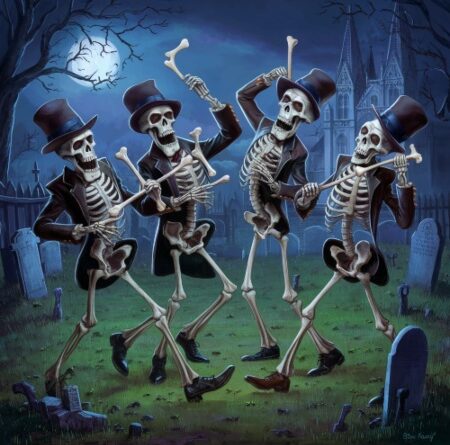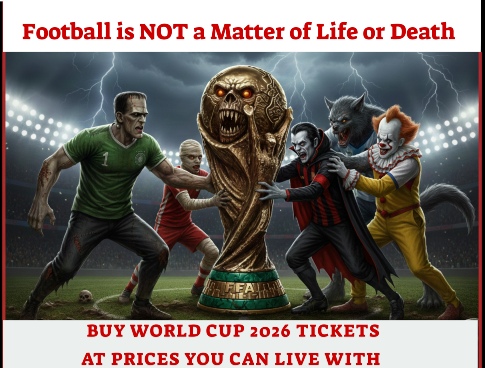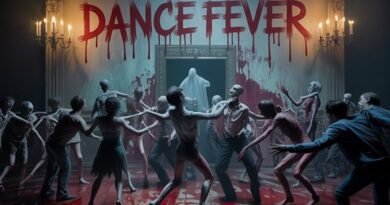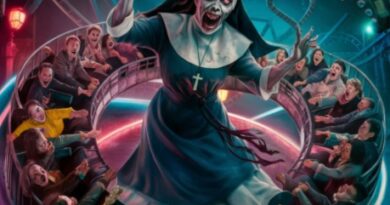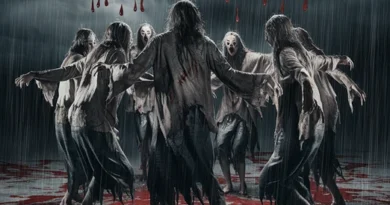Dance To Your Bones: The Skeleton Dance Is A Timeless Classic
“Why didn’t the skeleton go to the dance?” says the way too familiar joke. As you probably heard, the answer is something like “it had no-body to go with!”. After you stop laughing, you can see an ironic way to look at this joke. Cause the skeletons mentioned are probably not the ones you can see in “The Skeleton Dance” from precisely 95 years ago, one of the essential short films by Walt Disney.
There is no doubt that Walt Disney’s contribution to the world of animation – and, of course, to the world of children – is unprecedented. Most people picture before their eyes the characters that the brand created through the years, such as Mickey Mouse (who, unsurprisingly, would star in quite a few horror movies in the next years) and his gang, Winnie the Pooh (who unfortunately got a few horror movies), The Lion King, Aladdin, and many others. Disney has a massive influence on the development of animation, with one of the prominent examples of this being “The Skeleton Dance,” – a short animated video from 1929 that introduced many innovations and influenced the development of animation and the horror world in general in more ways than one.
So what is The Skeleton Dance? Why is it considered a classic? And which films took inspiration of it?
When Was The Skeleton Dance Made?
Walt Disney’s ‘the Skeleton Dance’ is a short video of about five minutes, produced and directed by the visionary himself, based on the illustrations of Ub Iwerks, a titan in the world of animation. Iwerks, known for creating about 700 drawings daily, was the mastermind behind Mickey Mouse’s character and many other Disney icons. His influence extended beyond Disney, earning him two Oscars, one for inventing a special camera in 1960 and another for the special effects in Hitchcock’s ‘The Birds.’
The video is the first in the ‘Silly Symphony’ series, a groundbreaking collection of 75 short musical animated films created by Walt Disney from 1929-1939. These films, some based on well-known fairy tales and some based on stories the company specially wrote, were a platform for Disney to experiment with new animation techniques and storytelling methods, and they significantly influenced the development of the animation industry.
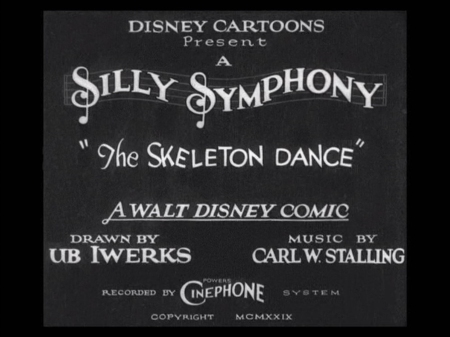
To understand the importance of short film, we must focus on when was The Skeleton Dance made. Walt Disney decided to produce videos to create diversity so that they would only rely a little less on the character of Mickey Mouse, who became a hit. Composer Carl W. Stalling proposed the idea of a series of music videos and that the first film would center on dancing skeletons. He was influenced, among other things, by an advertisement he saw in “American Boy” as a child, in which the central visual image was a dancing skeleton. Stalling is the one who also created the music for the video and many others in the series.
Iwerks, responsible for the music and some of the voices (Walt Disney also participated in the dubbing), drew inspiration partly from artworks featuring dancing skeletons. Some of these artworks focus on the ‘Dance of Death’ (Danse Macabre), a medieval allegory on the universality of death. This influence can be seen in how the film’s skeletons are depicted as lively and entertaining rather than frightening.
When Distribution Was A Challenge For Disney
The production of The Skeleton Dance was complicated, as was its distribution. The skeleton dance was one of the company’s initial “business cards.” To secure a distributor for the subsequent films in the “Silly Symphony” series, Walt Disney and his brother Roy organized a screening event at two premiere theaters: the Carthay Circle Theatre in Los Angeles and the Fox in San Francisco.
Eventually, the Columbia Film Company was impressed, acquired the rights, and distributed the first set of films (26 in total) between 1929 and 1932.
After that, United Artists took over the distribution. The company wanted to capitalize on Mickey Mouse’s popularity, so the opening credits of each film featured “Mickey Mouse Presents: Silly Symphony.”
The Skeleton Dance Plot: Bones As Musical Instruments
The iconic opening image of the skeleton dance begins during a storm at night, with an owl perched on a branch and, behind it, a full moon. The owl looks frightened in front of a branch that turns into a large and scary-looking hand, as the sounds it makes blend in with the storm’s sounds. We then see a church and hear the clock strike at midnight, which causes some bats to flee. After a few more horror images, such as bats flying towards the viewer, a stray spider, and the silhouette of a howling dog, an amusing battle begins between two black cats fighting over a grave.
The issue is that a skeleton emerges from the grave, frightening the cats so much that their fur falls out. The skeleton moves in various ways, synchronized with the music, and at some point, the owl joins them. The owl startles the skeleton, causing it to throw its skull and roll back toward the grave, where four more skeletons appear. All the skeletons dance in perfect synchronization with the music, moving in a way reminiscent of the imaginative style of Walt Disney and his friends.
Here you can watch The Skeleton Dance:
The Skeleton Dance In Color. Kind Of
It is important to note that in 1937, illustrator Ub Iwerks was working on a new video series for Columbia Studios, “Color Rhapsody.” One of the videos is “Skeleton Frolic,” a color remake of the original 1929 Skeleton Frolic. The video, about seven minutes long, works on the same idea, although they also used real musical instruments this time. Includes several scenes identical to the original film, including:
🦴 Church at night during a storm, when bats fly towards the screen after the church bell rings.
🦴 Skeletons throw their heads at an animal
🦴 A skeleton plays the “xylophone” with the spine of another skeleton
🦴 The skeletons fled to their graves after hearing the chicken
The Dance That Changed The World Of Animation
The skeleton dance is considered groundbreaking in several ways, but it didn’t come out of nowhere. You can see it as a relatively modern expression of the medieval “Dance of Death,” an artistic motif that symbolizes that death is universal and no one is immune to it. The allegory of death as a dance with skeletons appears in many works of art, such as engravings, paintings, sculptures, poems, and more.
To understand the importance of the skeleton dance, you have to go back to the 20s of the 20th century. At a time when talking cinema was still in its infancy, the film presented an unusual combination of movement and music, and the result was awe-inspiring for that time, technically and artistically. The film is considered a significant milestone in the development of animation, not only because it was the first swallow of the series of videos that became a classic. The animation here is smoother than what you are used to, for example, in “Steamboat Willie,” which came out only a year earlier.
The Skeleton Dance and the following films were an attempt by Disney to stretch the boundaries of animation further. At a time when talking cinema was still in its infancy, creating short animated videos in which the music is one of the main stars, and for which the animation is intended to match, was a change from the usual approach, in which the creators match the music to the animation. The film highlighted the connection between animation and movement, even choreography, and improved their level of complexity. He showed the possibility of creating creative combinations between music and movement, which was pretty new. It is considered the first film to present sound not produced in post-production (Non-Post Sync). In other words, unlike the usual process where they made the film and then added the music, in this case, they made the sound and animation simultaneously.
Today, we live in an age where you can create photos, drawings, and even videos in seconds, and thanks a lot to artificial intelligence (AI) tools that offer this. In the 20s of the 20th century, the process was much more complex and Sisyphean. The animation was manual, requiring the animators to draw each frame individually. Synchronization between sound and image was particularly complex because sound technology in movies was still in its infancy. Walt Disney’s desire in the films was to create smoother and more natural movement. You can achieve this while developing new animation techniques and significantly improving the quality of drawing and painting each frame.
The influence of the “Skeleton Dance” goes beyond animation. The film is also considered influential in combining gothic aesthetics with visual humor. The film contributed to a broader acceptance of animation as a severe and legitimate art form, not just as entertainment for a young audience. He showed that animation could be sophisticated, artistic, and relevant to adults, an idea that continued to evolve. A piece of clear evidence is that today, there are “friendly” horror films for children based on the purity of animation alongside films intended in advance for an adult audience.
One of the proofs of the film’s importance is that in 1994, the American animation historian (there is such a profession) Jerry Beck wrote a book about the 50 greatest cartoons, as selected by 1,000 animation experts (“The 50 Greatest Cartoons: As Selected by 1,000 Animation Professionals”). The skeleton dance reached the very respectable 18th place.
From Burton To Jackson: The Cultural Effects Of The Skeleton Dance
The film influenced several creators, whether at the level of aesthetics, the general idea, or even some precise references.
Corpse Bride Skeleton Song
Even if it is difficult to prove that the video directly and unambiguously influences every scene of the dancing skeletons, it is difficult to ignore the similarity. Tim Burton, for example, excellently incorporated in his masterpiece “Corpse Bride” a piece of music, “Remains of the Day,” in which a troupe of skeletons performs beautifully, including some movements we saw in the original skeleton dance.
Coco Skeleton Characters
The fact that the animated hit “Coco” by Pixar also incorporated a skeleton dance should not surprise you because, after all, we are talking about a film that deals with the meeting between life and death around the Day of the Dead in Mexico. In one of the most memorable scenes from the movie, a skeleton joins the show on stage.
Michael Jackson Thriller
It is impossible to discuss dance scenes in cemeteries and not mention the most famous dance in this context: Michael Jackson’s Thriller music video. In the clip (a kind of short horror film of about 13 minutes), there are indeed no skeletons but more zombies. Still, in my opinion, it would not be too wild to claim that the dancing of the skeletons is part of the possible effects of this masterpiece, which we will also analyze soon on the website.
Disneyland Attractions
We can find many References to the dance can in the broad world of Disney, including several videos and films in which the skeletons were “guests.” For example, the skeletons were part of some of the facilities, shows, and even fireworks at Disneyland.
Is The Skeleton Dance Public Domain? Not Yet!
As you may have deduced from the wave of Disney-based horror films (former?) that we are witnessing, the question of the expiration of the rights is one of the most significant about Disney characters, and it turns out for the films as well. This year marks the 95th anniversary of the “The Skeleton Dance,” and that’s a reason to party. As a result, we have already seen several special products launched to mark the celebration, such as:
🦴 a terrific mini backpack and a wallet from Loungefly, in collaboration with Disney.
🦴 The Skeleton Dance 95th Anniversary Glow In The Dark Sliding 3-Inch Collector Box Pin
🦴 The Skeleton Dance 95th Anniversary Zip-Around Wallet
🦴 The Skeleton Dance 95th Anniversary Crossbody Bag
In 1957, Walt Disney renewed its rights to the video, but in just a few months – January 1, 2025 – it will go into the public domain. Just like Winnie the Pooh, Mickey Mouse, Bambi, and other friends who starred and will be part of many horror movies in the coming years – because that’s how you can take advantage of a beloved brand and rake in profits even on a film whose quality is very problematic – the creators of horror may be stepping on the loot. Who knows, we’ll hear about a low-budget horror movie whose protagonists are skeletons dancing in a cemetery.
💀 Killer Deals & Scary Recommendations 💀
🎭 Costumes & Accessories
HalloweenCostumes Fun Costumes Entertainment Earth
🛒 Online Shopping
AliExpress Amazon Walmart Etsy
🧛 Collectibles & Horror Brands
Funko Hot Topic Lego Spirit Halloween
🎢 Attractions & Tours
GetYourGuide Tiqets Viator Klook
📖 Blogs & Horror Sites
Bloody Disgusting iHorror Fangoria
🩸 Disclaimer: Some links are affiliate links. The price stays the same – it just helps keep the site alive 👻

